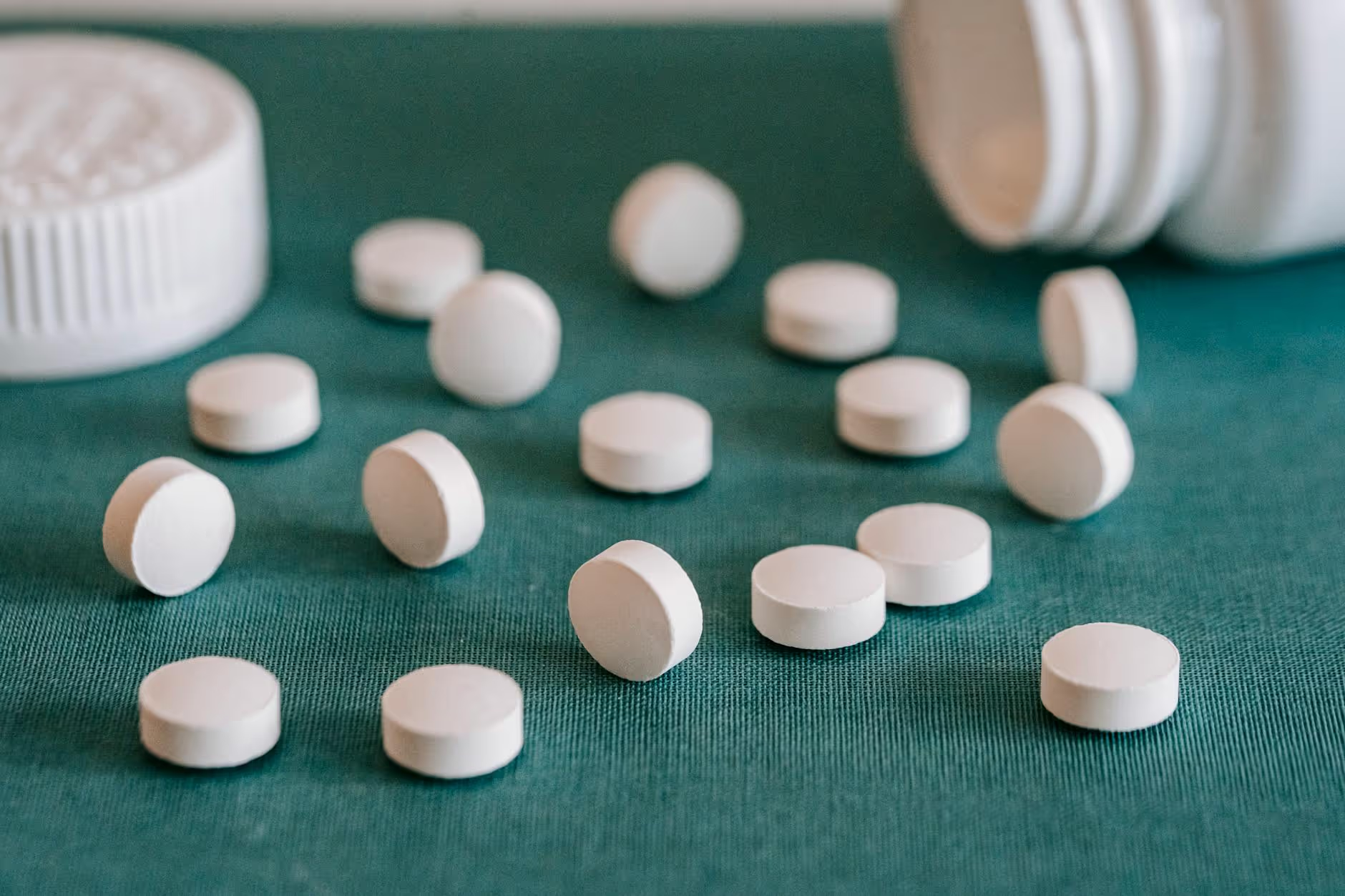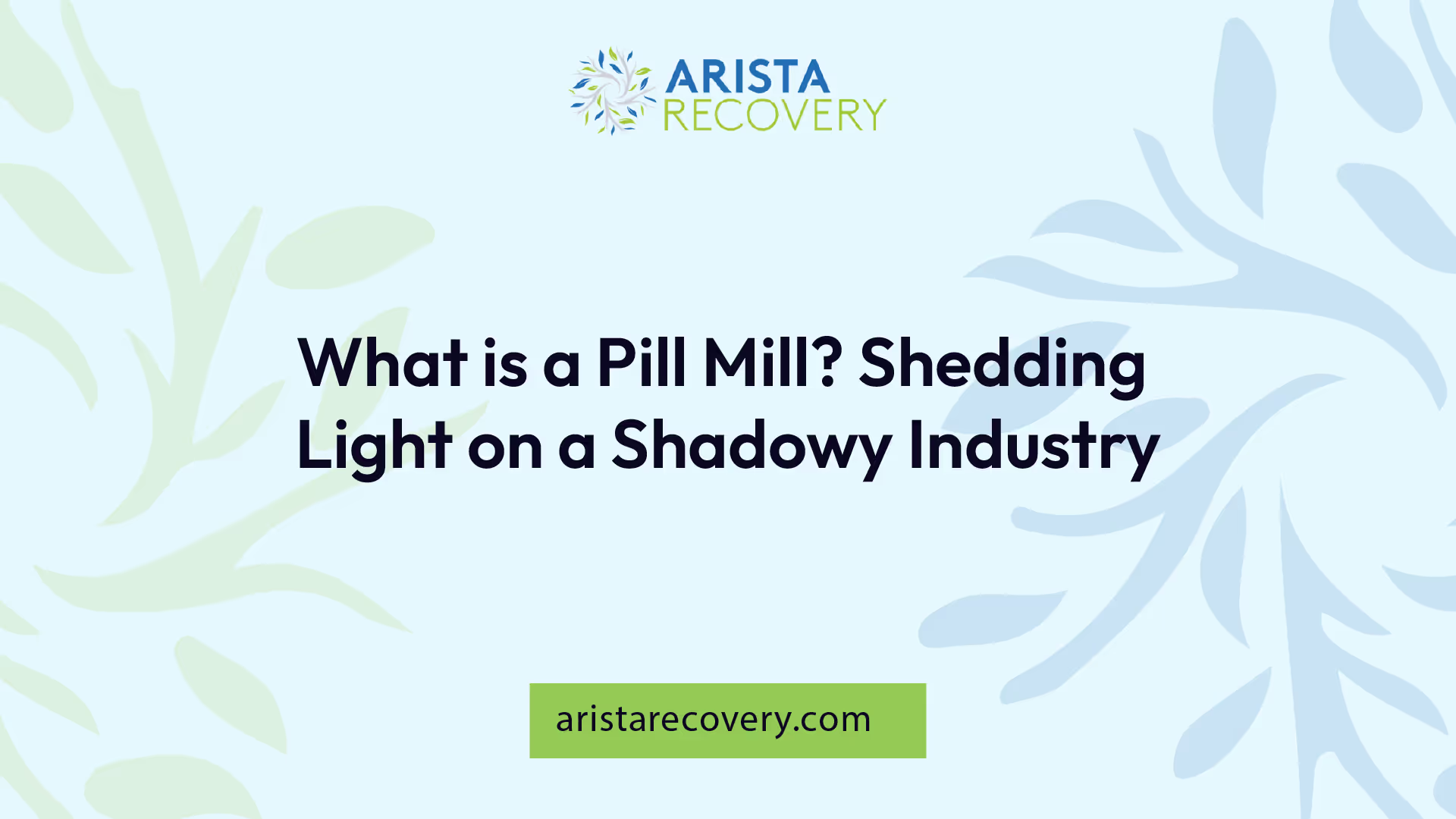What is a Pill Mill? Shedding Light on a Shadowy Industry

Understanding Pill Mills
Definition of Pill Mills
Pill mills are illicit facilities that operate under the guise of legitimate medical practices, predominantly pain management centers. They are characterized by excessive prescribing and dispensing of controlled substances, especially narcotics, without adhering to proper medical protocols. These establishments often provide potent medications to patients after little or no examination, bypassing standard procedures like taking a medical history or conducting a physical assessment. Typically, transactions are conducted in cash, further indicating the illegitimate nature of these operations [1].

Characteristics of Pill MillsDescriptionType of OperationIllegitimate pain clinicsPrescribing PracticesExcessive and inappropriateMedical ProtocolsLacking or completely absentPayment MethodsUsually cash
Operating Practices
The operational practices of pill mills are designed to prioritize profit over patient well-being. They often attract individuals seeking easy access to prescription painkillers, creating a rapidly revolving door of patients. These establishments frequently open and close quickly to avoid detection by law enforcement, making it difficult to track their activities. The highest concentrations of pill mills are found in states like Florida and Texas, though they exist nationwide, with arrests reported in states like New York, Ohio, and Illinois.
Pill mills typically rely on marketing strategies that emphasize immediate relief and quick gratification, often using advertisements to lure potential clients. Within these facilities, patients are sometimes enticed with the promise of powerful medications, which can lead to addiction and subsequent misuse.
Common Operating PracticesDescriptionSpeedy ConsultationsMinimal patient evaluationCash-Only TransactionsAvoiding insurance and recordsQuick TurnoverFrequently changing locations
The rise of pill mills has been linked to a significant increase in opioid misuse and overdoses, particularly in states like Florida, which experienced a surge in mortality rates from prescription opioid overdoses between 2003 and 2010 [1]. This alarming trend underscores the critical need for effective regulation and enforcement measures to combat this shadowy industry.
History of Pill Mills
Origin of Pill Mills
Pill mills began with Dr. David Herbert Procter in South Shore, Kentucky, near Portsmouth, Ohio, in 1979. Dr. Procter was among the pioneers in prescribing painkillers containing opiates during the mid-1980s. His business expanded significantly with the introduction of OxyContin, a powerful opioid pain reliever. Following this genesis, pill mills proliferated in several states, including West Virginia, Texas, New Mexico, and New York. Florida became particularly notable for its high concentration of these clinics [1].
Spread of Pill Mills
Over the years, the rise of pill mills contributed to a troubling public health crisis, characterized by high rates of opioid prescriptions and associated addiction issues. Kentucky is currently third in the nation for drug overdose mortality rates per 100,000 persons, with opioid pills constituting a significant portion of these fatalities [3]. In response to the growing crisis, states began implementing legislative measures aimed at curbing the operations of pill mills.
In Texas, for instance, extensive legislation was passed in 2009, mandates that pain management clinics be certified by the Texas Medical Board and that they be owned and operated by a licensed physician. These clinics were subject to closer scrutiny, particularly regarding patient files and physician presence [4].
The implementation of laws such as House Bill One (HB1) in Kentucky, passed in April 2012, also aimed to limit opioid prescriptions by pain management physicians. This legislation resulted in a substantial increase in registered users for monitoring systems, jumping from 7,500 to 23,000, and a spike in reports from the monitoring program, going from 3,300 to 17,000 within one year [3].
Although these legislative measures led to a significant decline in opioid prescriptions, they also had the unintended effect of increasing heroin distribution and abuse in some areas. This paradox highlights the complexities surrounding addiction and drug regulation [3].
Impact of Pill Mills
Pill mills are a significant contributor to the opioid epidemic in the United States, characterized by their illegal practices under the guise of legitimate pain management clinics. These facilities often prescribe highly addictive painkillers with minimal medical oversight, exacerbating the issue of substance misuse and addiction.
Contribution to Opioid Epidemic
The increase in opioid abuse is closely linked to the rise of pill mills, which provide potent medications without the necessary examinations or medical protocols State of Georgia. These clinics typically accept cash payments and prescribe narcotics without conducting proper assessments of a patient's medical history or physical condition.
The impact of these facilities on opioid consumption is illustrated in the following table:
YearPercentage Increase in Opioid Prescriptions in Florida2002-200310%200420%200530%200640%200750%200860%200970%201080%
Mortality Rates and Regulation
The rapid expansion of pill mills, particularly in Florida, led to a surge in mortality rates from prescription opioid overdoses. From 2003 to 2010, the rise of these facilities corresponded with increased death rates associated with opioid misuse. Regulatory measures implemented to combat this issue resulted in a significant reduction in these fatalities, saving an estimated 1,029 lives over a 34-month period due to targeted legislative efforts.
However, while regulations have been effective in reducing opioid prescriptions, they have also led to unintended consequences. An increase in heroin distribution and associated overdoses has been observed in states that implemented strict legislation against pill mills National Institute of Health. This highlights the complex interplay between suppressing illegal drug distribution while managing the ongoing opioid crisis.
Characteristics of Pill Mills
Understanding the operational dynamics of pill mills reveals several concerning characteristics that differentiate them from legitimate medical facilities. This section will cover the ownership and payment practices typically associated with pill mills, as well as the lack of established medical protocols.
Ownership and Payment
Pill mills are frequently owned and operated by non-medical personnel. Instead of being led by licensed healthcare professionals, these establishments prioritize profit over patient care. One defining feature of these facilities is that they only accept cash payments, actively refusing insurance or other methods of payment. This cash-only policy raises red flags regarding the legitimacy of their practices. Patients often find on-site pharmacies within these clinics, allowing them to obtain their prescription drugs immediately after their visit.
CharacteristicDetailsOwnershipOften owned by non-medical personnelPayment MethodsCash only; no insurance acceptedOn-site PharmacyAllows immediate access to prescribed drugs
Lack of Medical Protocols
Pill mills exhibit a notable absence of proper medical protocols. Such establishments typically do not maintain medical records, nor do they perform necessary medical examinations, X-rays, or other diagnostic findings before prescribing medications. This deficiency in medical oversight raises serious concerns about the safety and appropriateness of care provided within these clinics.
Patients in these facilities often encounter practices where they select their medications without appropriate medical guidance, further illustrating the lack of standard medical protocol. Additionally, abusers may engage in "sponsoring" schemes, where one individual bears the costs of obtaining medications in exchange for a share of the pills, highlighting the manipulation and exploitation of the pill mill system for financial gain NCBI.
CharacteristicDetailsMedical RecordsTypically absentMedical ExaminationsNot conductedPatient InteractionPatients may select medications themselvesDrug Diversion SchemesInvolvement in sponsoring and selling excess
The operational characteristics of pill mills are alarming and point to a significant deviation from established medical practices, leading to increased concerns about patient safety and the overall impact on public health.
Regulation and Enforcement
Legislation Against Pill Mills
Legislation aimed at combating pill mills has emerged as a critical strategy in addressing the opioid crisis. Various states have introduced laws to regulate the prescribing of opioids and to identify potential pill mills. For instance, in Florida, the implementation of pill mill laws from 2003 to 2010 was linked to a significant increase in mortality rates from prescription opioid overdoses. However, targeted regulation measures ultimately resulted in the saving of an estimated 1,029 lives over a 34-month period, highlighting the effectiveness of such regulations in tackling the pill mill issue.
Several states, including Kentucky, have mandated prescription monitoring reports. These laws aim to provide healthcare providers with insights into a patient's prescription history to assess the risk of misuse. While these measures led to an increase in monitoring reports, they did not result in a significant reduction in opioid overdose mortality. In some instances, there was a noted shift in consumption patterns, leading individuals to new types of opioids.
StateKey Legislative ActionImpactFloridaPill mill law implementationEstimated 1,029 lives saved from overdoseKentuckyPrescription monitoringIncreased reports, no significant decrease in mortalityTexasPill mill law24.3% reduction in total opioid volume
Effects of Legislation
The effects of legislation aimed at reducing the prevalence of pill mills have been mixed. While many states saw a notable decrease in opioid prescriptions following the implementation of these laws, there were unintended consequences. For instance, as access to prescription opioids became more restricted, there was a corresponding rise in heroin distribution and abuse [6].
In Texas, research indicated substantial reductions in important metrics one year after the introduction of pill mill legislation. Key findings included:
These data demonstrate that while legislation can effectively curb opioid misuse, it is crucial to monitor the shifting landscape of substance abuse patterns to address potential increases in alternative opioid misuse.
Addressing Pill Mills
Tackling the issue of pill mills requires a comprehensive approach, including monitoring and establishing effective prescription laws. These strategies are vital in reducing the prevalence of illegal opioid dispensing and improving public health outcomes.
Monitoring and Prescription Laws
Monitoring systems and prescription laws are critical tools in addressing the pill mill crisis. States have implemented various legislative measures designed to regulate opioid prescriptions and improve tracking. For example, Kentucky's House Bill One mandated restrictions on opioid prescriptions by physicians, and significantly increased the number of registered users for the prescription monitoring program from 7,500 to 23,000 in just one year [3]. This increased monitoring resulted in a substantial rise in reports generated by the program, indicating a more vigilant approach to prescription management.
A summary of key outcomes from various state implementations is shown below:
StateLegislation OutcomeRegistered Users IncreaseReports IncreaseKentuckyHB One7,500 to 23,0003,300 to 17,000TexasReductions in opioid prescriptionsNot specifiedNot specifiedFloridaDecreased opioid prescriptions post-lawSignificantNot specifiedOhioSimilar laws led to decreased prescriptionsSignificantNot specified
Targeted legislation in states like Texas led to notable reductions in key metrics one year post-implementation, such as an 8.1% drop in average monthly morphine equivalent dose per transaction and a 24.3% decrease in total opioid volume [4]. However, while these measures are effective at reducing prescriptions, they also led to unintended consequences, such as an increase in heroin distribution and abuse.
Success Stories and Challenges
Success stories highlight the potential effectiveness of regulation. For instance, regulation measures targeting pill mills in Florida saved an estimated 1,029 lives from prescription opioid overdose over a 34-month period [1]. This demonstrates the power of targeted state regulations and enforcement in combating the opioid crisis.
Nevertheless, challenges remain. Although there have been positive outcomes, the complexity of addiction means that some individuals may turn to alternative illicit substances, like heroin, due to the restrictions (National Institute of Health). This situation complicates the landscape of addiction treatment and requires continuous adjustments to ensure that measures do not inadvertently worsen the problem.
Research also indicates mixed results regarding the long-term effects of pill mill laws on opioid overdose deaths. As states continue to navigate this complex issue, it is clear that a multi-faceted approach, combining monitoring, education, treatment options, and law enforcement, is essential to effectively combat the influence of pill mills and protect public health.
You’re not alone in this.
When mental health challenges and addiction intersect, it can feel isolating. At Arista, we offer compassionate, evidence-based, and trauma-informed care to help you heal, grow, and move forward.
You’re not alone in this.
When mental health challenges and addiction intersect, it can feel isolating. At Arista, we offer compassionate, evidence-based, and trauma-informed care to help you heal, grow, and move forward.
Support that moves with you.
You’ve taken a brave first step. At Arista Recovery, we’re here to help you continue with best-in-class care designed for long-term healing and support.
.webp)






